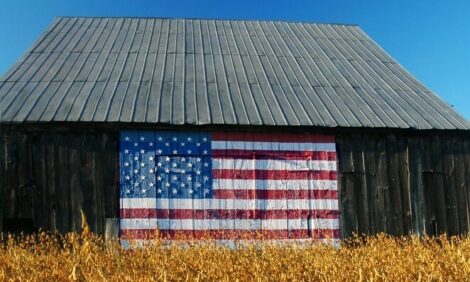Higher Corn Acreage May Cause Prices to Plummet
US - With the release of USDA's June ‘Grain Stocks’ and ‘Acreage’ reports comes a fundamental shift in the corn market, suggesting that corn prices will come under considerable pressure, according to University of Illinois agricultural economist, Darrel Good.
"Both the June 1 estimate of corn inventory and the planted acreage estimates caught the market by surprise in a very bearish way," Dr Good said. "The June 1 stocks number estimated at 3.67 billion bushels is 350 million bushels more than the average trade guess and implies that we have slowed our consumption of corn for feed in residual use. We'll have to wait until the September report to reconcile the numbers, but on the surface we've got a lot more corn on hand than the market anticipated.
"Year-ending stocks will also be larger than what has been projected. The planted acres number of 92.3 million is about one and a half million more than the average trade guess and a surprising 100,000 acres more than indicated in the March planting intentions report," he said.
Dr Good continued that even with some lost acres due to flooding, so that there will be a slightly smaller percentage of planted acres than normal – 84.9 million projected to be harvested, which now projects to a fairly large crop.
Producers are now faced with prospects for a large corn crop and prices that will likely slide. Just how far prices will fall is the question.
"Assuming that the growing season continues without any widespread severe, threatening weather, and the market starts thinking that we'll have a 160-bushel yield on corn, I think we're going to see a gradual decline in corn prices right into harvest," Dr Good said. "Obviously that could get interrupted with some weather problems, but if it doesn't, I'd say we're on a downward trajectory right into the harvest period."
Dr Good said it is difficult to predict how low corn prices will go and noted that corn is still about $3 higher in the spot corn market than a year ago.
"But this new information does suggest that there is considerable downside risk for corn. Even though we're seeing substantial sell-off immediately following the report, there may still be some opportunity to add to sales," he said.
In 2007, the price of corn rallied in the fall. Could that happen this year?
"In 2007 and into 2008, we were on an upward movement in terms of consumption of corn," Dr Good said. "The ethanol industry was still expanding rapidly in terms of its consumption of corn. We just don't have that situation now. I think consumption has plateaued for all of our domestic markets and perhaps exports as well. We don't want to get too bearish and say that the prices are going to go down forever, but I think fundamentally the demand side looks very much different now than it did four years ago."
The report also means that this year's corn acreage is one of the largest on record.
"If you go back to the 1940s, you might find bigger acreage but in modern history, 2007 had record corn acres and 2011 looks to be the second largest," Dr Good said.
How does EPA's plans for 15 per cent ethanol blends affect the corn market?
Dr Good said that the 15 per cent blend could accommodate current policies in terms of mandated levels of biofuels production.
"If we eliminate the tax incentives, we may be looking at ethanol production coming down because we're not producing above the mandated level," Dr Good said. "If the tax incentive goes away and fuel prices come down a bit, then we might see blenders drop back to just blending the mandated levels for the biofuels in the year ahead. That's a lot of ifs, but even if they don't, we're still saying that the rate of increase in ethanol production has slowed considerably, and we're not going to see the growth spurt that we've seen in the past three years."
Dr Good said that year-ending stocks may be closer to 900 million bushels by 1 September 2012.
It was a different story for soybeans, Dr Good said.
"June 1 soybean stocks were a bit higher than expected, close to 30 million bushels," Good said. The planted acres number at 75. 2 million came in well below expectations. The crop could come in considerably below what the USDA has projected for consumption for the upcoming marketing year. So, unless we have quite good yields on soybeans, we may be in a rationing situation on the soybean crop next year, like we thought we would have on corn this past year."
Further Reading
Further Reading















